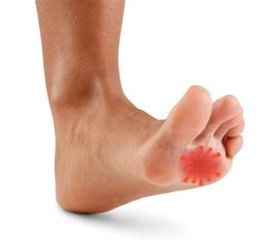Журнал «Травма» Том 15, №5, 2014
Вернуться к номеру
Diagnosis and surgical treatment of metatarsalgia
Авторы: Gai L.A., Venger V.F., Serdyk V.V., Sayed M.A., Bodny A.I., Pavlychko Y.Y., Parvej Singh
Рубрики: Травматология и ортопедия
Разделы: Клинические исследования
Версия для печати
Introduction. Plays an important role in the stop professional activity, sport , leisure modern man, experiencing significant static and dynamic loads associated with the musculoskeletal system. Impaired function of the foot, and even appearance, can lead to significant limitations in daily living. Challenge of modern orthopedics is the treatment of patients suffering from static deformity. In this metatarsalgia is a significant percentage of adult patients.
Materials and Methods. Clinical Center harvested material 221 contained observation that in the control group of patients was 156, and the core 65. Before starting the surgical treatment of metatarsalgia was previously held development interphalangeal and metatarsophalangeal joints of the toes on the background of thermal treatments and magnetic therapy to address sustainable flexor - extensor contracture. Need this was due to the fact that, as a rule, for their removal surgeon during surgery intervention , was forced to perform various osteotomy for simultaneous correction of foot deformities. Our proposed surgical procedure is as follows. Through a skin incision on the back - the inner surface of the foot area bared bone - cartilage overgrowth of the first metatarsal head. Triangular-shaped flap cut out of the first metatarsophalangeal joint capsule, was made as wide as possible. After removing the bone - cartilage growths on the medial surface of the head of the first metatarsal bone trough formed 5-6 mm deep and 15-20 mm in length , the bottom of which covered the greater portion of the capsular piece . In the newly formed trough long extensor tendon was transferred first toe and closing the top part of the second fascial - capsular flap. Extensor tendon short the same finger remained in place. Actually not sews the tendon, so it retained viability , and the ability to move freely in the newly channel. Thus, the transplanted tendon, like a bridle, securely hold the first finger in the correct position, and soft tissue fixation trans bone component eliminates the possibility of migration. Second stage transposition long extensor tendons of the second and third toes on under the capitate zone corresponding metatarsal.
Active use of magnetic therapy in the postoperative period in these patients allows a number of distinct anti-and analgesic effect, was a means of prevention of postoperative suppuration stimulated tissue regeneration process operated. Surgery developed by us was used in the treatment of 65 patients with metatarsalgia due to deformation of the forefoot, who were treated at clinical department of traumatology and orthopedics Odessa National Medical University
Results and discussion. The results obtained in the treatment of orthopedic patients the results were evaluated as the next (up to 6 months), and the remote (up to 3 years) postoperative period. In our study, we compared the efficacy of the treatment of metatarsalgia in the control and study groups of patients. In the control group , which were applied to different types of operations , usually conducted in our clinic , the results of treatment were followed up in 156 patients. Excellent and good results of treatment of patients in the study group largely depended not only on the use of our proposed operations, but also from compulsory rehabilitation of the complex in the preoperative period, as well as physical therapy in the postoperative period.
Findings.
1. Elimination toe contractures preoperatively can improve the efficiency of surgical intervention in patients with metatarsalgia by reducing its volume. Long extensor tendon
2. Transplantation first finger on the inner surface of the metatarsal bone defect fixes its position during the presence of foot deformity in patients with metatarsalgia.
3. Failure from using plaster boot in favor of the internal bone fixation operated fingers, needles created an opportunity to improve the effectiveness of rehabilitation in the postoperative period in patients with metatarsalgia.
4. Nearest and long-term outcomes in patients with metatarsalgia using a new integrated method showed its high clinical, anatomical and functional performance, which minimizes the possibility of relapse.

